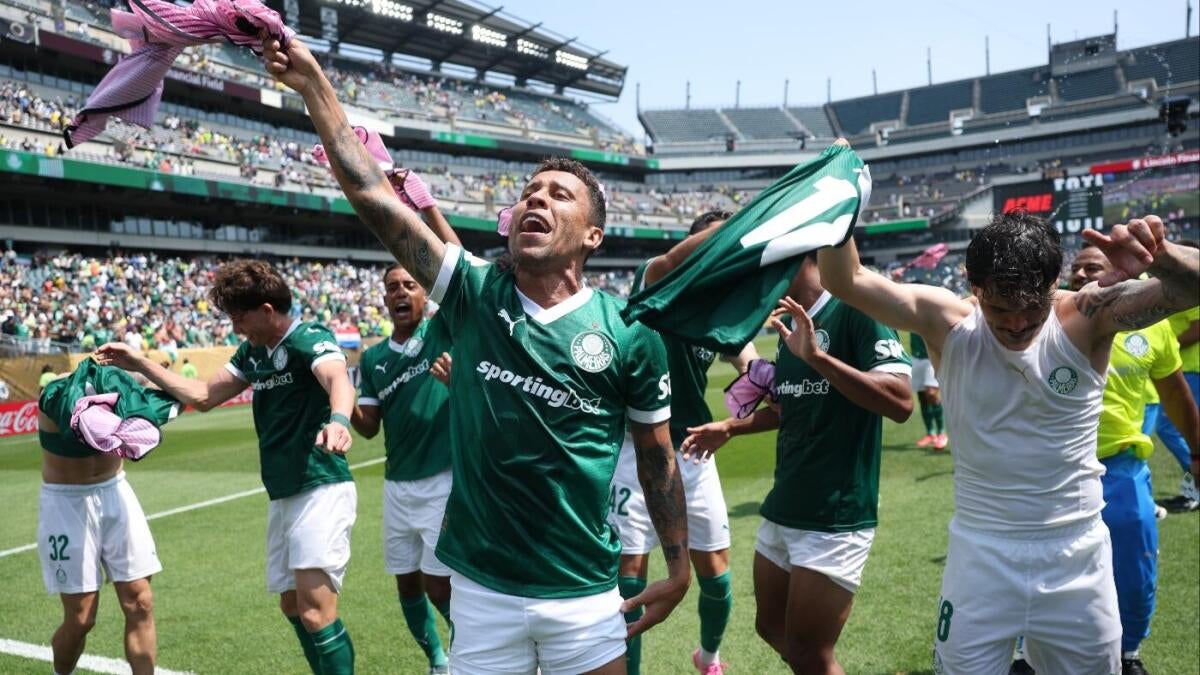The 2025 FIFA Club World Cup has become a stage for Brazilian football to reclaim its global prominence, as four Brazilian clubs—Palmeiras, Flamengo, Botafogo, and Fluminense—have advanced through the group stage, showcasing resilience and quality that challenge the traditional dominance of European clubs. This resurgence is not just a fleeting moment but a testament to the tactical evolution, physical preparedness, and strategic advantages that Brazilian teams have harnessed. As the tournament progresses, the implications for Brazilian football are profound, though challenges remain as they face seasoned European opponents in the knockout stages.
A Tactical Renaissance in Brazilian Football
The success of Brazilian clubs in the 2025 Club World Cup is rooted in tactical innovation, particularly under coaches like Abel Ferreira of Palmeiras. Ferreira’s high-pressing, counter-attacking strategy has transformed Palmeiras into a disciplined yet dynamic force, capable of outlasting opponents in high-stakes matches. This approach contrasts with the more possession-based styles often associated with European clubs, proving that Brazilian teams can adapt and thrive in diverse tactical environments.
Palmeiras’ victory over Botafogo in extra time, secured by a Paulinho goal, exemplifies this tactical discipline. The ability to maintain intensity and composure in prolonged matches is a hallmark of Ferreira’s system, which emphasizes stamina and mental resilience. Similarly, Botafogo’s upset over Paris Saint-Germain demonstrated that Brazilian clubs are no longer one-dimensional, blending youthful energy with experienced leadership to navigate complex tournament scenarios.
The Physical and Environmental Edge
Beyond tactics, Brazilian clubs have benefited from physical and environmental advantages that have played a crucial role in their success. Unlike European teams, which are often fatigued from long domestic and continental campaigns, Brazilian clubs are entering the tournament at peak fitness, having just begun their domestic seasons. This freshness has allowed them to sustain high levels of performance across multiple matches, a factor that has not gone unnoticed by analysts.
Additionally, the climate conditions in the host cities have favored South American teams, who are accustomed to warmer, more humid environments. European players, often used to cooler climates, have struggled with the physical demands of playing in such conditions, giving Brazilian teams an edge in endurance and adaptability. While these factors may seem secondary, they have contributed significantly to the underdog narratives of Brazilian clubs in the tournament.
The Broader Impact on Brazilian Football
The resurgence of Brazilian clubs in the Club World Cup has reignited national pride and highlighted the potential of the Brazilian league on the global stage. Since Corinthians’ victory in 2012, Brazilian clubs have not won the world title, making this year’s performances particularly significant. The success of Palmeiras, Flamengo, Botafogo, and Fluminense has the potential to attract renewed investment in domestic leagues, inspire young talent, and restore confidence in the Brazilian football ecosystem.
Brazil’s interest in hosting future editions of the Club World Cup further underscores the country’s ambition to reclaim its status as a football powerhouse. If Brazilian clubs continue to perform at this level, it could lead to increased international recognition, stronger commercial partnerships, and a more competitive domestic league. The momentum generated by these performances could also encourage more Brazilian players to remain in the country rather than seeking opportunities abroad, further strengthening the league’s depth and quality.
The European Test and the Road Ahead
Despite their impressive performances, Brazilian clubs now face the ultimate test: overcoming European giants in the knockout stages. Teams like Chelsea and Benfica bring a wealth of experience, tactical sophistication, and world-class talent that will challenge the resilience of Brazilian sides. While some critics argue that European teams may have been underprepared or fatigued during the group stages, the knockout rounds will provide a clearer picture of Brazilian clubs’ true capabilities.
For Palmeiras, the journey to the quarterfinals represents an opportunity for redemption and validation. With two Copa Libertadores titles already under their belt, a Club World Cup victory would cement their status as a global powerhouse. The club’s blend of tactical discipline, physical resilience, and creative flair sets the stage for a compelling clash with European adversaries. Should Palmeiras succeed, it would mark a historic moment for South American football and signal a shift in the global football landscape.
Conclusion: A Shift in the Global Football Landscape
The 2025 Club World Cup has become a platform for Brazilian football to assert its dominance and challenge the traditional hierarchy of global club football. The performances of Palmeiras, Flamengo, Botafogo, and Fluminense are not just isolated successes but a reflection of a broader resurgence in South American football. This momentum is underpinned by tactical innovation, physical preparedness, and strategic advantages that have allowed Brazilian clubs to compete at the highest level.
As the tournament progresses, the true test will be whether these teams can sustain their performances against the best European clubs. If they succeed, it could herald a new era where South American clubs reclaim their rightful place atop global football. The world will be watching closely as Brazilian giants attempt to translate their promise into historic triumphs, potentially reshaping the future of the beautiful game.

